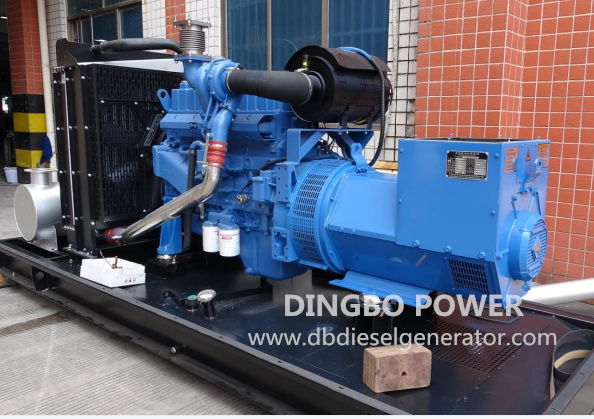A diesel genset may malfunction after a certain period of use. It’s crucial to know how to troubleshoot diesel generator issues. Disassembly is an important part of the generator set repair work. If you want to dismantle and repair the generator yourself, you need to make some preparations and follow the normal disassembly methods to prevent damage to the machine or other accidents. In this article, Dingbo Power introduces several important things that you need to know about disassembly of diesel generator.
Principles of disassembly
To prevent various accidents and ensure smooth disassembly of the genset, the following principles should be followed during disassembly:
Firstly, understand the structural characteristics of diesel genset as well as its components and how it works. Secondly, for those diesel generators without technical data and instructions, be sure to record the torque of the disassembling parts when dismantling the generator sets. Thirdly, do not extend the scope of generator repair work at will. Finally, follow the specific principles of disassembly.

How do you prepare for the disassembly of diesel genset ?
When disassembling the diesel generator set, it’s necessary to make the following preparations before disassembly:
1.Understand the technical conditions of diesel genset
Before fixing the problem, you should have a comprehensive understanding of the fault situation, technical details and usage of the generator. For example, if oil burning of diesel engine arises, you need to determine in which cylinder the fault occurs, figure out the fault location and then dismantle and repair the genset.
2.Prepare technical materials and maintenance workplace
Before repairing a certain type of diesel genset, make sure you understand its repair guide and technical requirements. It’s worth noting that the repair technical standards of different types of diesel generators are not the same. If there is no technical data and instructions and the maintenance information of diesel generators from the same series is also missing, you should record various data before disassembling and all sorts of torques during the process of disassembly. In addition, prepare a certain place with enough space for the diesel genset, avoid dismantling it outdoors in windy or rainy conditions.
3.Prepare tools for disassembly
The common used tools of diesel generator sets include open-end wrenches, torx wrench, pliers, socket wrenches, adjustable wrenches, torque wrenches, hammers, wood hammers, hacksaw blades, etc. The special tools mainly include sleeves for dismantling connecting rod bolts and tools for assembling pistons and so on. The measuring tools include gauges for adjusting valve clearance, steel rulers, inside micrometers and outside micrometers for disassembling piston rings and steel rulers, etc. Hoisting tools include jacks, pry bars, sheave blocks and so on and so forth.
Additionally, prepare cleaning equipment, utensils and cleaning agents. Generally, use an oil basin and a brush as cleaning equipment and the cleaning agent is usually gasoline or diesel. Repair parts, various gaskets, appliances for labour protection and tags used for recording cylinder units, etc. should also be prepared before the disassembly of diesel genset.
What are the important things you need to know during disassembly?
As a crucial energy propeller, the internal-combustion engine needs to be paid attention to many details during operation to ensure its performance and service life. One of the key steps is to disassemble the diesel generator set after it has completely cooled. Disassembly with high temperature will cause thermal stress, which affects the cylinder blocks, cylinder heads and other components and results in permanent deformation, then affects the performance of the internal-combustion engine. Therefore, to prevent this from happening, the machine should be dismantled after cooling. This important principle should be kept in mind and followed to ensure the proper operation of the internal-combustion engine.
When dismantling the cylinder heads, connecting-rod caps, main bearing caps and other parts of the diesel genset, the bolts or nuts should be symmetrically and evenly loosened and carried out in 2-3 times in a specific sequence. Do not loosen the nuts or bolts on one side and then the other side, otherwise it may lead to uneven stress on the parts, causing deformation or crack damage.
Mark the mating parts of the machine carefully. For timing gears, pistons, connecting rods, bearing bushes, valves and other parts, as well as related adjusting shims, the marked parts need to be recorded and the unmarked parts need to be marked. The labels should be placed on an observable but non-working surface to avoid damage to the assembly datum plane and maintain the original assembly relationship of the equipment as much as possible. For some components, such as the wire connection points or joints on internal-combustion engines and generators, they can be marked with paint, score or hangtags, etc.
Disassembly of the diesel genset should be done cautiously, and all kinds of tools, especially special tools, should be used correctly. For example, you’d better use piston ring pliers when removing the piston rings and use spark plug sleeves with appropriate force when dismantling spark plugs. Otherwise, you may suffer hand injuries and the spark plugs may be damaged easily.
Conclusion
To ensure the safe disassembly and repair work of the diesel genset, you need to make enough preparations and pay attention to the technical details, the disassembly method of the parts, and the connection relationship between the parts. Always follow the normal disassembly steps when disassembling the generator set. It’s recommended that you contact your manufacturer or a professional if you have insufficient experience with the diesel generator set. For more help disassembling the genset or choosing the perfect diesel generator, please contact us today.
Comments
Post a Comment